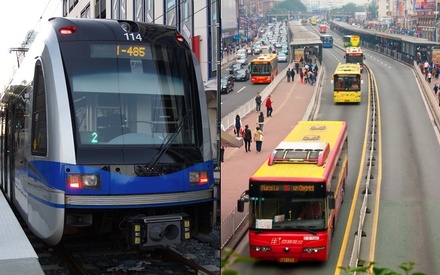|
Home  News News
Do we really need sexy mass transit vehicles?
|
Cities like Wellington have a strong case for choosing BRT over light rail when it comes to transit expansion, especially when looking for an efficient and low cost solution. Plus, riders may ultimately not really care how sexy a transit vehicle is — provided it picks them up soon and takes them where they need to go.
|
 |
|
10 August 2013 - When the city of Wellington, New Zealand, decided to expand its public transit system, Mayor Celia Wade-Brown initially favoured light rail as the so-called sexy option. Then the project estimates came in.
According to the Dominion Post, the capital budget for Light Rail Transit (LRT) came to $940 million, while those for Bus Rapid Transit (BRT) came to only $207 million. And this despite the fact that BRT was expected to reap a greater return for the city.
That was enough to convince Wade-Brown, who subsequently called BRT "nearly as sexy as light rail and a lot cheaper."
BRT and light rail are often considered side-by-side when a city decides to enhance transit in a densely populated corridor or build an entirely new system for the metro region. To be sure, they have many similarities, including exclusive lanes and attractive stations (when done right). Light rail proponents typically point to capacity and style as selling points, whereas BRT proponents often point to price.
|
|
While the relative costs of BRT and LRT have been studied for years — with the US General Accounting Office (GAO) finding more than a decade ago that BRT was indeed generally cheaper, at least when it came to capital construction — researchers have yet to explore their relative popularity among riders. In other words, all else being the same, do riders really prefer one of these modes to the other?
“They kind of do, but mostly they don’t”, according to new work done by Graham Currie and Alexa Delbosc of Monash University in Australia, published in the latest issue of the Journal of Public Transportation. Currie and Delbosc gathered data on 44 BRT systems in Australia and 57 light rail systems (including streetcars) from Australia, Europe, and North America. They measured success in terms of passenger boardings per kilometre during the years 2001 to 2009. Then they considered a number of variables — from service level to city density to car ownership — that might also influence ridership in the metro region.
Currie and Delbosc found that when the greater capacity of light rail cars was accounted for, the difference in mode (BRT versus light rail) no longer predicted ridership. They found that routes with higher service levels are more efficient and attract more riders than low service routes and that good service, above all, is the key to good transit.
BRT: a smart, efficient, affordable, green, safe and user-friendly move.
Read more on Bus Rapid Transit – the mobility hit for Smart and efficient cities!
Source
|
|














